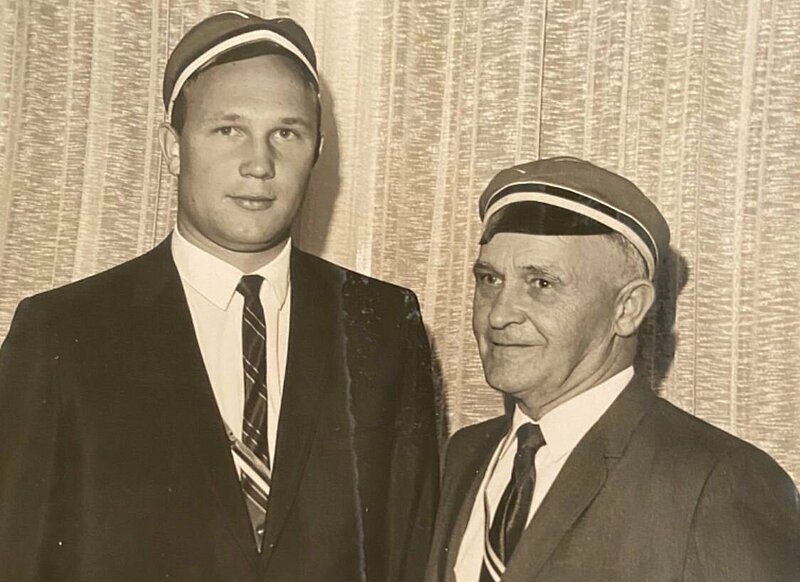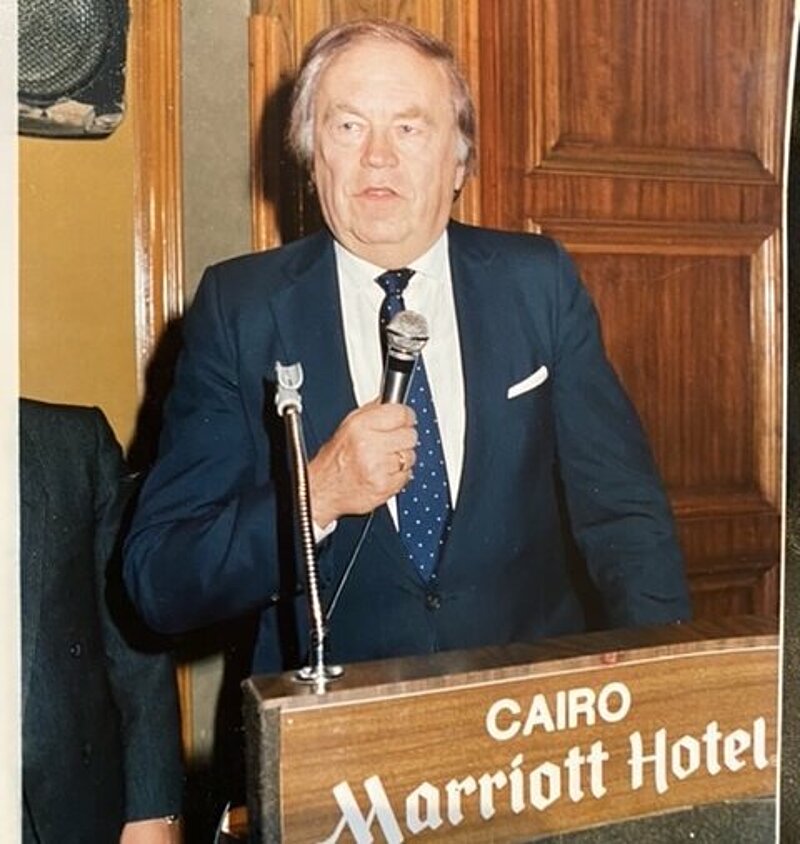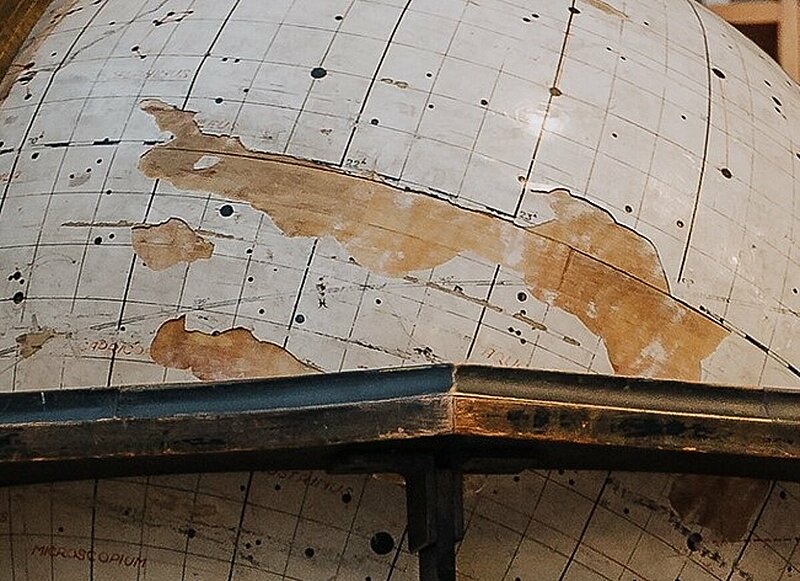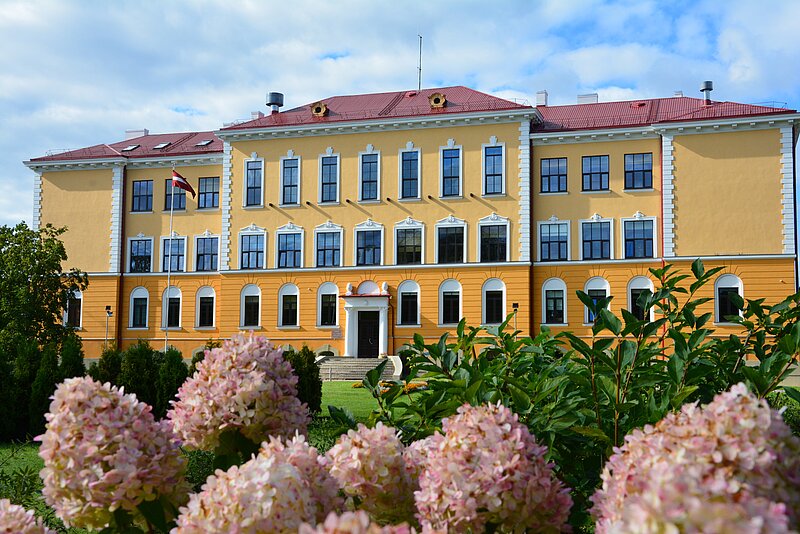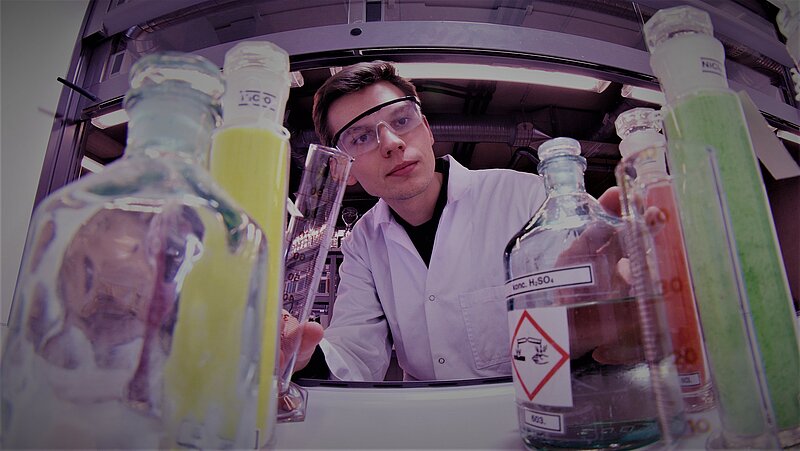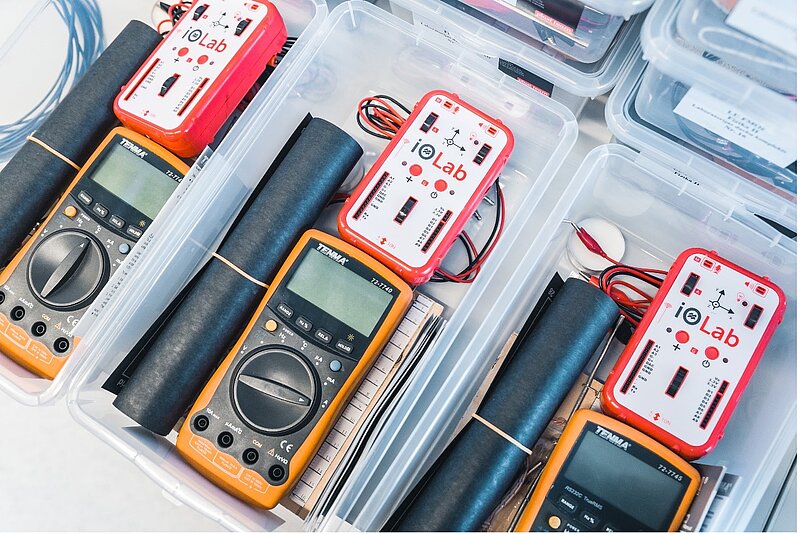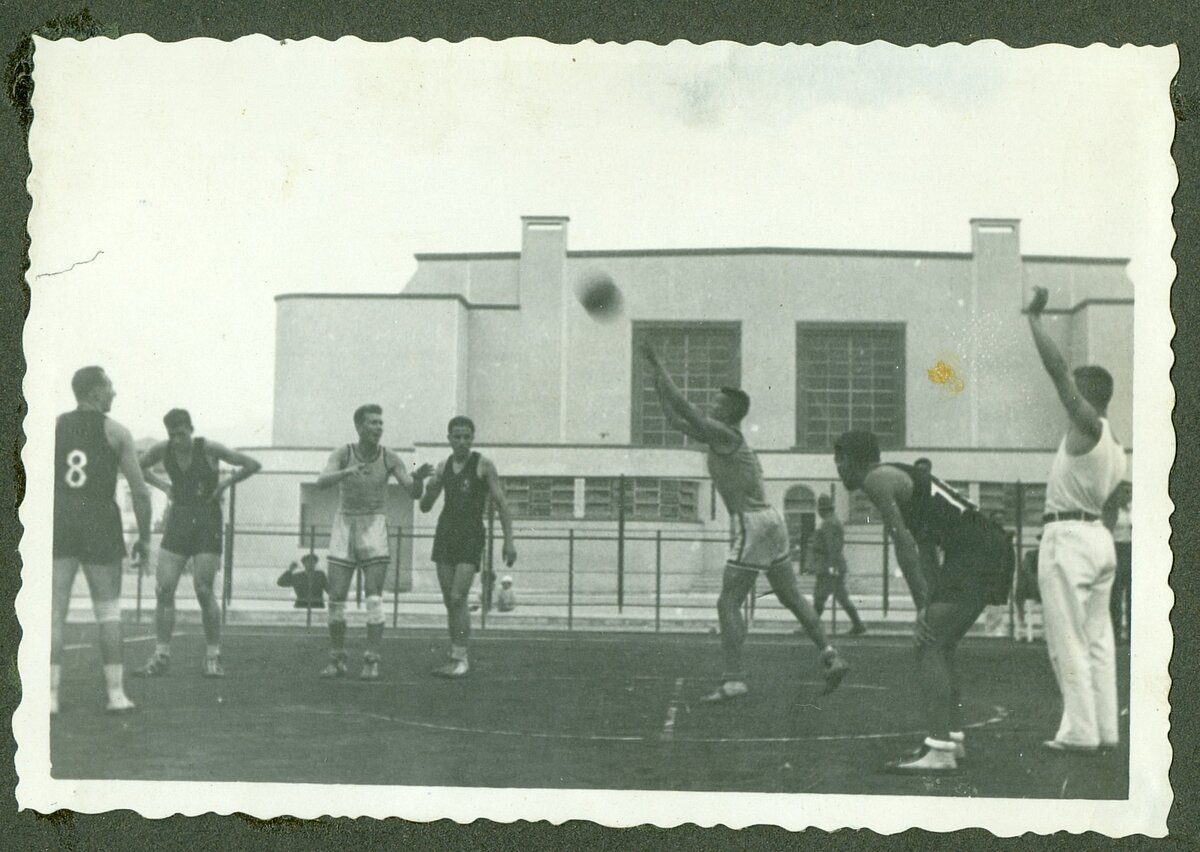
Annija Pozņaka, a scholarship recipient of the University of Latvia (UL) Foundation, is interested in basketball, and while volunteering at the UL Museum, she chose to write an article about a legendary Latvian basketball player, a student of the UL Faculty of Economics and Law, a member of the Latvian student corporation Beveronija, an active sports lobbyist in the Student Council of the UL and a captain of the so-called Dream Team Rūdolfs Jurciņš.
Rūdolfs Jurciņš and Beveronija
R. Jurciņš's connection with the UL and the Latvian student corporation Beveronija itself is evidenced by the Beveronija colour ribbon, which was permanently transferred for storage in the UL Museum on March 10, 2020 by the editor-in-chief of the Latvia’s National Encyclopaedia, historian of student academic organizations and a member of Latvian student corporation Fraternitas Cursica Valters Ščerbinskis. V. Ščerbinskis actively emphasizes in the public environment that student academic lifelong organizations must be recognized as the cultural and historical heritage of Latvia, thus he considered it his duty to hand over the Beveronija colour ribbon to the new Museum of the UL for permanent storage. However, the Beveronija colour ribbon itself did not belong to R. Jurciņš, but R. Jurciņš has worn this type of colour ribbon in the internal and external life of the student corporation.
Beveronija colour ribbons are divided into three types - Festive, Everyday and Evening Dress (tailcoat and tuxedo). The Festive ribbon is 25 mm wide, the Everyday one – 12 mm wide and the Evening Dress – 6 mm wide. Only one copy of Everyday ribbon is available in the collection of the Museum of the UL, which is, respectively, 12 mm wide. Prior to the transfer, V. Ščerbinskis kept this tape so that it would not disappear as a cultural and historical value. It is not known who this ribbon belonged to. [1] Both R. Jurciņš and Beveronija members wore colour ribbons, putting them over their chests from right shoulder to left hip under a jacket or over a vest. If a member of Beveronija is a soldier or an officer of the Latvian National Armed Forces, he wears all 3 coloured ribbons separately above the uniform over his chest from right shoulder to left hip, but only in the internal life of the student corporation Beveronija (it is forbidden to wear it in external life). It is forbidden to wear the colour ribbons for Beveronija candidate members, for members of other student corporations and for people not belonging to student corporations. [2]
The colour ribbon visually consists of tricolour, which is typical for all student corporations in Latvia, Estonia, Poland and Germany. The tricolour on the colour ribbons was adopted in accordance with the 1812 Code of Law for student corporations of the University of Jena (the Comment), which was taken over by the restored University of Tartu in the Russian Empire in 1802. Based on the rules of the adopted code of law, the principle of tricolour colours was observed in the student corporations founded at the University of Tartu, including the Latvian student corporation Lettonia, which is the legal guardian (the Comment guarantor) of the student corporation Beveronija. [3] Also at Riga Polytechnicum, founded in 1862, later reorganized in 1896 as Riga Polytechnical Institute, student corporations took over the Comment of Jena from the University of Tartu, following the principle of tricolour. When RPI was reorganized into the University of Latvia in 1919, the Jena Comment was taken over by the UL under the leadership of its rectors, Lettonia corporation members Ernest Felsbergs and Jānis Ruberts. Between 1922 and 1927, new student corporations were formed, such as Beveronija on May 4, 1922. For the Beveronija colour ribbon, the tricolour is purple-gold-light blue, which is not only on the colour ribbons, but also on the coat of arms and the flag. The colour decals are purple-light blue-gold. [4] The colours symbolize Beveronija's ideological principles: purple for prolific work, gold for the achievement of sublime goals, and light blue for clarity of heart and honour of mind. It was the personality of R. Jurciņš and his contribution to the development of Latvian basketball that corresponded to the ideological principles of this student corporation. [5]
Rūdolfs Jurciņš and basketball
R. Jurciņš was born on June 19, 1909 in Riga, Russian Empire, and died on May 22, 1947 in a deportation to Siberia, USSR. He studied at the Riga City 1st Gymnasium, where a sports teacher Bernsons directed R. Jurciņš towards basketball. [6]
R. Jurciņš played a particularly important role in the so-called "Dream Team of 1935" because he excelled in his technical performance on the basketball court as the team captain. [7] The basketball player has been called the brightest Latvian basketball star of the 30s. [8] Sports experts have affirmed that he had the ability to "read" the game, and by nature he was given a talent for physical endurance. It is one of these advantages that made it possible for him to be the main player of the jump ball or the starter of the game. Historical facts confirm that the height of the player was 185 cm, which, compared to the average length of the current basketball player, is clearly not characteristic of the height of the centre player. Nevertheless, it cannot be ignored that the basketball player's leap has been repeatedly appreciated by the old masters (basketball veterans).
Sport achievements have neither begun nor ended with the victory in the first European Basketball Championship in Geneva, Switzerland in 1935, where Latvia became the first European champion. R. Jurciņš also holds the six-time title of the champion of Latvia, representing the Latvian Basketball Association (LBA) and the sports association “University Sports”, founded in 1929 under the auspices of the Student Council of the UL, in basketball competitions. R. Jurciņš also took part in the Berlin Olympic Games in 1936, playing a total of 23 games for the Latvian basketball team. [9]
Student corporations have had a major impact in “University Sports”, including R. Jurciņa Beveronija, which, in cooperation with the Latvian student corporations Lettonia and Selonija, organized the Presidium Convent (the umbrella organization for student corporations) basketball tournaments. [10] It was the active sports lobby of student corporations and the numerical majority over other factions [11] in the Student Council of the UL, organizing the Presidium Convent basketball tournaments, that created a serious basis for a successful start in the 1935 European Basketball Championship, providing the Latvian state with the first European champion title. [12]
Active sportsman R. Jurciņš was unable to separate from Riga during the Second World War and participated in the renewal of basketball life. On October 18, 1945, R. Jurciņš was arrested by the USSR NKGB, which was followed by deportation to Siberia for "illegal possession of weapons." Dates show that he died in 1948 in Siberia. R. Jurciņš, as a representative of “University Sports”, belongs to the family of the most notable men of Latvian sports. [13]
The collection of the Museum of the UL includes a significant collection of the history of student academic lifelong organizations and of Sports of the UL, which you can get acquainted with by applying for a consultation: tel. 67034031, 25733456 or muzejs@lu.lv
At the Latvian Sports Museum you can get acquainted with the collection of Latvian sports history by requesting a consultation or a visit: tel. 67225127, solvita.lomanova@sportamuzejs.lv
More information:
Student corporation “Beveronija”
Rūdolfs Jurciņš (Latvian Basketball Association)
Rūdolfs Jurciņš (Latvian Olympic Committee)
[1] Karols, Jānis., Kamars, Pēteris., Mežaks, Jānis. Beveronija internais komāns. Toronto: Daina Press Ltd. 1971, p. 23.
[2] Ibid., p. 23.
[3] Stradiņš, Jānis. Studentu akadēmiskās organizācijas: Latvijas un Eiropas kultūrvēsturiskajā aspektā. No: Zariņš, Ilgonis (galv. red.). Universitas: Scientiae et Patriae (74/1995). New York: Latvian Association of Student Corporations. 1995, p. 11.
[4] Briedis, Juris (galv. red.). Augstākās tehniskās izglītības vēsture Latvijā (2. daļa): Tehniskās fakultātes Latvijas Universitātē, Rīgas Universitātē, Latvijas Valsts universitātē (1919-1958). Riga: Riga Technical University. 2004, p. 89-90.
[5] Karols, Jānis., Kamars, Pēteris., Mežaks, Jānis., p. 19.
[7] Zveja, Ilze., Grauba, Aigars., Ēķis, Andrejs. Sapņu komanda 1935. Laika stāsti. Publisher: Zvaigzne ABC, p. 75-85.
[8] Latvian Basketball Association Hall of Fame, players 100, Rūdolfs Jurciņš.
[9] Kesiels, Guntis. Latvian men's basketball team. Latvia's National Encyclopaedia.
[10] Karols, Jānis., Kamars, Pēteris., Mežaks, Jānis., p. 96-97.
[12] Sātiņš, Kārlis. P!K! Basketbola un volejbola turnīri. No: Šilde, Ādolfs (galv. red.). Universitas: Scientiae et Patriae (4/1957). New York: Latvian Association of Student Corporations. 1957, p. 50-51.

 Academic Centre
Academic Centre